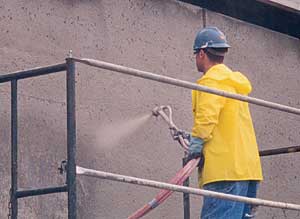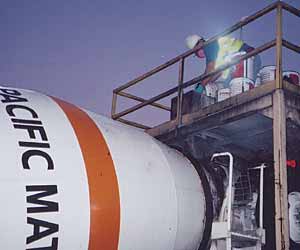Concrete Waterproofing with Crystalline Technology
|
While crystalline waterproofing admixtures are compatible with superplasticizers, air entraining agents, water reducers, fly ash, and other ingredients may be used to improve the performance of modern concrete mixes. When specifying crystalline waterproofing as an admixture, design professionals should verify that all elements in the concrete mix are compatible with each other.
|
Dry-Shake Application of Crystalline Waterproofing for New Slab Construction
Crystalline waterproofing can also be applied by the dry-shake application method, like floor hardeners to new slabs while under construction. This process requires the crystalline powder compound to be sprinkled onto the surface of slabs with the use of a mechanical spreader after concrete is placed, consolidated, and leveled. The powder is then worked into the surface of the slab during the normal finishing process with a power trowel. Crystalline waterproofing is also available combined with synthetic floor hardeners to both waterproof and harden floor slabs. Typical applications for the dry-shake application are basement slabs and warehouse floors.
Negative Side Waterproofing
Existing basements that are subject to water seepage or vapor transmission through foundation walls and floors can be treated by the application of crystalline waterproofing and protection on the negative side, or the inside, of the structure. Surface coatings will blister and peel when moisture seeping through the concrete dissolves soluble minerals and deposits them on the surface, under the coating, in the form of efflorescence, a white powdery substance that forms on the wall surface. Because crystalline waterproofing penetrates into the concrete, plugging the pores beneath the surface, it does not depend on surface adhesion and will not blister and peel off, like surface barriers. "I specify crystalline waterproofing on virtually every one of my projects as an admixture for the retaining side of walls where applied membranes cannot be used," says Mel Cole, FCSI, an architectural specifier in Soquel, California.
Vapor transmission through basement floors and walls is a common problem that may lead to damp, musty odors. Testing has shown that the application of multiplicative crystalline technology under these conditions will reduce vapor flows as much as 50 percent, which in most cases, will result in a drier environment.











